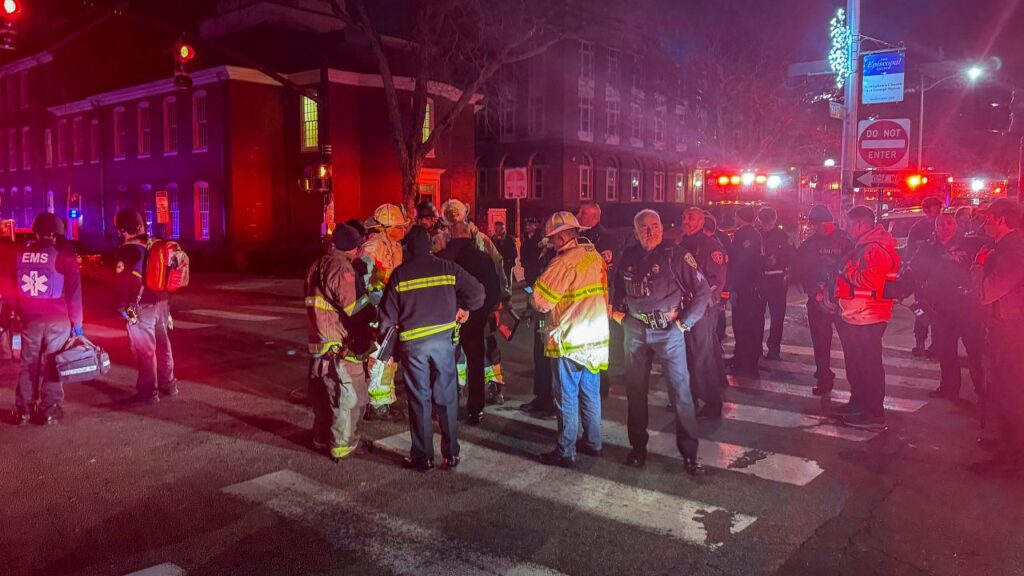Share
Like trying to put toothpaste back in the tube, Valley Children’s Hospital is tired of hearing a narrative that kids aren’t affected by COVID-19.
Todd Suntrapak, president and CEO of Valley Children’s Healthcare called statements that youngsters don’t get the coronavirus or suffer consequences “a disservice to our children.”

“Those data, which we are confident about, do not support a statement that children do not get COVID-19.” — Todd Suntrapak, president and CEO, Valley Children’s Healthcare
Though Suntrapak didn’t specifically call anyone out, as recently as Wednesday President Donald Trump said that kids “don’t catch it easily, they don’t bring it home easily. And if they do catch it, they get better fast.”
Suntrapak revealed data during a 45-minute Zoom call with reporters Thursday showing that in the Central Valley, 12% of all COVID-19 cases are kids 0-17.
“Those data, which we are confident about, do not support a statement that children do not get COVID-19,” said Suntrapak.
Myths About COVID-19 & Children
Dr. David Christensen is senior vice president, medical affairs, and chief physician executive for Valley Children’s.
He joined reporters via Zoom to help dispel a couple of myths.
Myth 1: COVID-19 doesn’t affect children
“It’s true that the majority of kids do very well when they get this infection and in fact can be asymptomatic,” said Christensen.
But, he says Valley Children’s has had a total of 69 COVID-19 patients hospitalized since the beginning of the pandemic. Kids as young as 2 weeks of age have been infected and signs point to a recent surge in young people.
“There’s been a rev up over the last month of kids with COVID-19,” said Christensen.

“There’s been a rev up over the last month of kids with COVID-19.”–Dr. David Christensen, Valley Children’s Hospital
Valley Children’s released internal data going back to the beginning of the pandemic.
- 6,473 COVID-19 tests
- 8.0% positivity rate
- 69 COVID-19 patients requiring hospitalization (17% of those sick enough for pediatric ICU care)
Myth 2: Kids Can’t Spread COVID-19
“That just goes against logic,” said Christensen.
The CDC said on July 16 that based on a new study out of South Korea the transmission rates from children to family members are:
- 0-9 years old: 5.3%
- 10-19 years old: 18.6%
In other words, younger kids appear to spread the disease less than older kids. Children 10-19 actually appear to spread the disease at about the same rates as adults, according to Christensen.
The study is accompanied by an advisory from the researchers that “the number of cases might have been underestimated because all asymptomatic patients might not have been identified.”
Concerns About Kids Returning to School
“It’s less about the vaccine,” answered Christensen when asked by GV Wire℠ if he’d only be comfortable with children going back to school when a shot for COVID-19 becomes available.
Christensen, of course, wants a vaccine that’s safe and effective. But until there is one, he said he wants to see the prevalence of COVID-19 in the Valley come down.
He equated the current progression of the disease to a forest fire that needs to be stomped out continually right now.
Valley Children’s doctors believe being physically in school is extremely important for student learning — and their psychological and mental health.
Many of the hospitals’ patients also rely on services provided by their local schools for their healthcare.
Multisystem Inflammatory Syndrome
Diseases specialist Dr. Nael Mhaissen says the hospital has seen quite a few children with multisystem inflammatory syndrome (MIS-C).
“Both the acute COVID-19 infection cases and the inflammatory infection cases are increasing,” said Mhaissen.

“Both the acute COVID-19 infection cases and the inflammatory infection cases are increasing.” — Dr. Nael Mhaissen, diseases specialist
The Centers for Disease Control issued an advisory about the syndrome May 14, warning of symptoms including fever, abdominal pain without another explanation, diarrhea, vomiting, rash, red or cracked lips, bumpy tongue, and swollen hands and feet.
So far, Valley Children’s has treated eight patients with this syndrome.
One drug used to help these children is remdesivir. On May 1, the U.S. Food and Drug Administration issued an emergency use authorization for remdesivir as a treatment for suspected or laboratory-confirmed COVID-19 in seriously ill adults and children.
“The remdesivir has been really helpful in these really sick kids,” said Christensen.
However, that medicine is in limited supply. Hospital communications director Zara Arboleda said, “We have enough remdesivir on hand to treat five patients right now.”
Remdesivir shortages have been reported by Fresno County officials, as well as hospitals in the Bay Area, according to KQED.
Valley Children’s has a COVID-19 information center available on its website for parents with questions or concerns.
[covid-19-tracker]


















